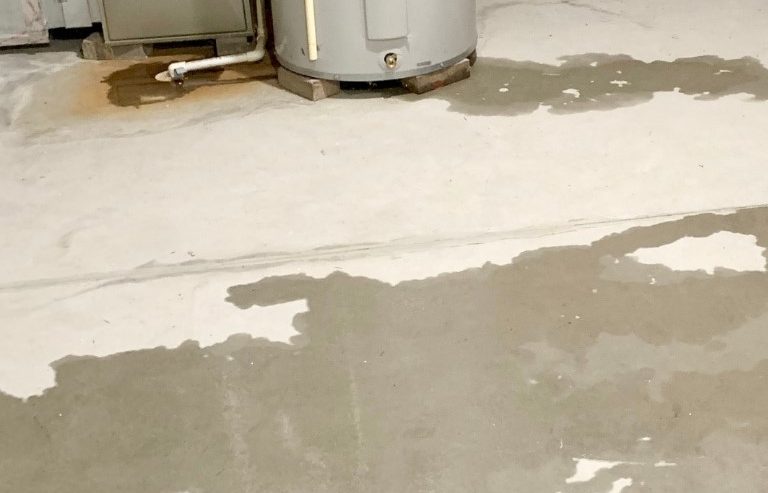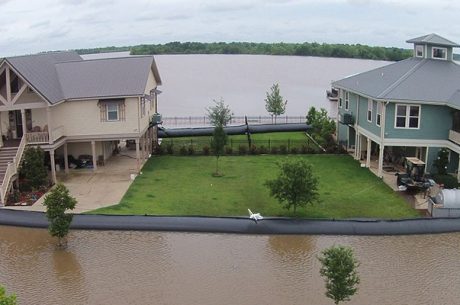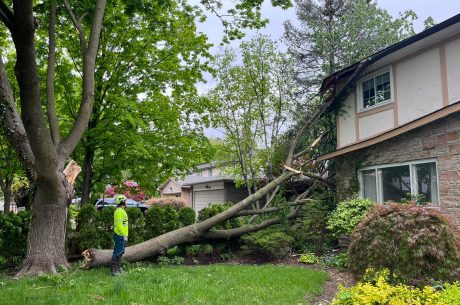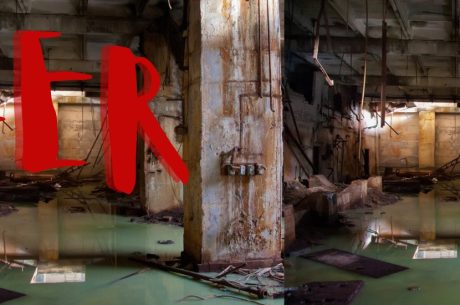Basements are often the first places in a home to show signs of water damage. This is especially true in Odenton, where weather patterns and local conditions can contribute to basement moisture issues.
Recognizing the signs of water damage early can save homeowners significant time and money. It can prevent minor issues from escalating into major structural problems.
This guide will help you understand how to spot water damage in your Odenton basement. It will cover the common signs of water damage, from stains and peeling paint to musty odors and efflorescence.
We’ll also delve into the common causes of water damage such as internal sources like plumbing leaks and external factors like heavy rain and flooding.
We’ll also discuss tools and techniques for detecting moisture, including the use of moisture meters and thermal imaging cameras.
Finally, we’ll provide solutions and preventative measures for basement water damage. This includes the use of dehumidifiers, proper ventilation, and regular maintenance checks.
Recognizing the Signs of Water Damage
Identifying water damage early can prevent extensive repairs later. One common sign is water stains or discoloration on walls and ceilings. These stains can range from yellowish to brown, often hinting at water intrusion.
Peeling paint or warped flooring also signifies moisture problems. When water seeps into these areas, it causes the materials to lose their integrity. Checking your basement for these signs can help catch damage early.
Musty odors typically indicate mold growth, a result of persistent moisture issues. If you notice a strong, earthy smell, investigate further. Mold not only damages property but can pose health risks.
Efflorescence is another warning sign, often found as a white, powdery substance on walls. This occurs when water evaporates, leaving mineral deposits behind. Additionally, rust appearing on metal fixtures signals prolonged exposure to moisture.
Cracks in the foundation can allow water to enter your basement. Pooling water, particularly after heavy rain, is another critical indicator. It’s vital to address these issues promptly to avoid extensive water damage in your basement.
Investigating Common Causes of Water Damage
Understanding the root causes of basement water damage is crucial. Internally, plumbing leaks can be a primary source of moisture. A burst pipe or a leaky joint can introduce substantial water into your basement unnoticed.
External factors also play a significant role in water damage. Heavy rain and flooding can overwhelm drainage systems, leading to basement water accumulation. This is especially problematic if your basement lacks proper sealing or drainage solutions.
Sump pumps are vital for basement water control, but they can sometimes fail. A malfunctioning sump pump means water isn’t being effectively managed, resulting in basement flooding. Regular testing and maintenance are necessary to prevent failures.
Gutter and landscaping issues contribute to water ingress. Poor gutter maintenance can lead to water spilling over the sides and pooling near the foundation. Similarly, inadequate landscaping might allow water to flow towards your home. Ensure gutters are clear and landscaping slopes away from the house to mitigate these issues.
Tools and Techniques for Detecting Moisture
Detecting moisture early can prevent extensive water damage. Moisture meters are effective tools for this purpose. They measure the moisture content in materials, helping you assess the extent of the problem. By using them on walls and floors, you can detect hidden moisture spots.
Thermal imaging cameras offer another layer of detection. These cameras visualize temperature variations and highlight areas where moisture might be present. They are especially useful for identifying moisture issues behind walls or beneath floors, which are otherwise invisible.
Regular inspection of pipes and drains is crucial. By routinely checking these areas, you can identify leaks or blockages early. Addressing any identified issues promptly can prevent more significant problems.
Maintaining low humidity levels in basements is essential for moisture control. High humidity can lead to condensation, which promotes mold growth. Humidity detectors can help you monitor levels, ensuring they remain optimal for a dry, safe basement environment.
Solutions and Prevention for Basement Water Damage
Effective basement moisture control starts with a dehumidifier. Dehumidifiers help maintain optimal humidity levels, reducing condensation. This simple device can significantly reduce mold risks and keep your basement dry.
French drains provide a practical solution for basement flooding. These systems redirect water away from your home, preventing pooling. By installing French drains, you can effectively manage water overflow during heavy rains.
Waterproofing your basement is a key preventive measure. Applying sealants to walls and floors protects against seepage. This proactive approach helps in safeguarding your structure from long-term water damage.
Ensure proper ventilation to minimize moisture buildup. Installing vents or fans can enhance airflow, lowering humidity. Regularly checking ventilation systems is vital to ensure their effectiveness over time.
Understanding your basement’s drainage system is crucial for prevention. Familiarize yourself with its design and operation to identify potential issues. Regular maintenance checks can prevent blockages and unwanted surprises. By incorporating these solutions, you can maintain a safe, dry, and healthy basement environment.
When to Call for Professional Water Restoration Services
Identifying when to seek damage restoration services is crucial. Visible signs like extensive mold or structural damage demand professional intervention. Don’t wait for water issues to worsen, which can elevate repair costs.
Hiring certified water restoration professionals offers numerous benefits. Experts use specialized equipment to detect hidden moisture and assess damage accurately. They ensure thorough restoration, safeguarding your property’s integrity and safety.
Emergency water damage services provide immediate assistance when flooding strikes. Quick response minimizes water impact and prevents further harm. For urgent situations, having a reliable service on speed dial can save time and stress.
Navigating Insurance and Documentation for Water Damage
Documenting water damage is vital for insurance claims. Take clear photos and keep detailed notes of affected areas. This evidence supports your claim and assists adjusters in evaluating the damage.
Understanding your insurance coverage specifics helps avoid surprises. Policies vary, so review details about water damage restoration coverage. Knowing what’s included or excluded can save headaches during the claim process.
Maintaining a home inventory is equally important. This record helps track water-damaged items and assists in determining compensation value. Regularly updating your inventory ensures accuracy in any future claims you may need to make.
The Importance of Early Detection and Professional Help
Early detection of water damage is essential for preserving your Odenton basement. Spotting issues quickly can prevent costly repairs down the line. Regular checks and prompt action enhance the longevity of your basement.
Professional water restoration and damage restoration services provide peace of mind. Experts offer effective solutions for emergencies and ongoing issues, ensuring the safety and integrity of your home. Their assistance can make all the difference in maintaining a dry, secure living environment.
For expert water damage restoration services in Millersville, contact PuroClean of Millersville today!




 PuroClean of Odenton
PuroClean of Odenton